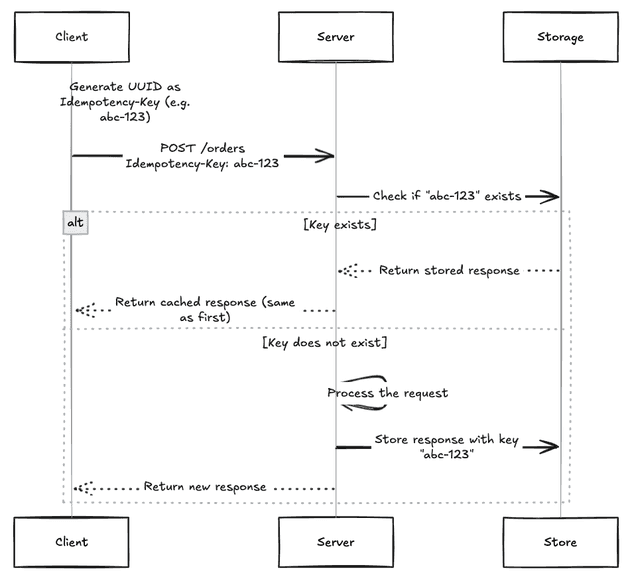In the real world, networks are unreliable. Users refresh or hit the “Submit” button multiple times. Services retry requests automatically. Imagine you're making a purchase from an online store. You hit "Pay" button but internet is slow/glitch, then you refresh the page and try again.
How does the system ensure aren't accidentally charged twice ?
Without safeguards, the backend could create multiple orders, charge the customer multiple times, or ship the same item twice.
This is where idempotency steps in.
Idempotency ensures that no matter how many times a client sends the same request, the server will perform the action only once—or return the same result without duplicating side effects.
This is crucial for:
- Payments (to prevent double charges)
- Order processing (to avoid duplicate orders)
- Inventory management (to keep counts accurate)
- API reliability (especially in distributed systems)
- ... etc
By designing operations to be idempotent, engineers build a safeguard against unintended side effects from repeated requests.
🔁 Idempotency-Key: A New Standard for Safer HTTP APIs
When building or integrating APIs, especially for payment, order processing, or any non-read operations (POST/PUT/PATCH/DELETE), handling retries safely is a critical concern. That’s where the Idempotency-Key HTTP header comes in.
The Idempotency Key Specification proposes a standardized way to support idempotent behavior in HTTP APIs by using a unique client-generated key. Here's what you need to know:
🚀 What is Idempotency-Key?
It's a header sent by clients to uniquely identify a request. If the same key is sent again, the server must return the same result as the original request—without repeating side effects like double-charging or creating duplicate resources.
POST /orders
Idempotency-Key: 123e4567-e89b-12d3-a456-426614174000The easiest and most reliable way to generate an Idempotency-Key is by using UUID v4 (a randomly generated Universally Unique Identifier) , or another random string with long enough to avoid collisions.
📊 Idempotency-Key Status Codes
| Code | Tittle | Reason |
|---|---|---|
| 200 | Cached response | Retry with same key |
| 201 | Created | First request with new key |
| 400 | Idempotency-Key is missing | Header required but not provided |
| 422 | Idempotency-Key already used | Same key reused with a different payload |
| 4xx/5xx | Other client/server errors | Follow standard HTTP error handling and documentation guidance |
Conclusion
Distributed systems are complex, and idempotency is a powerful concept that can greatly enhance the reliability and fault tolerance of your APIs.
Whether you're building payment systems, order flows, or any state-changing API, implementing idempotency is a small investment with a massive impact on user experience, data integrity, and system resilience.
For you referrences for organization that already implementationIdempotency Key Specification
- Stripe:
https://stripe.com/docs/idempotency
- Adyen:
https://docs.adyen.com/development-resources/api-idempotency/
- Dwolla:
- WorldPay:
